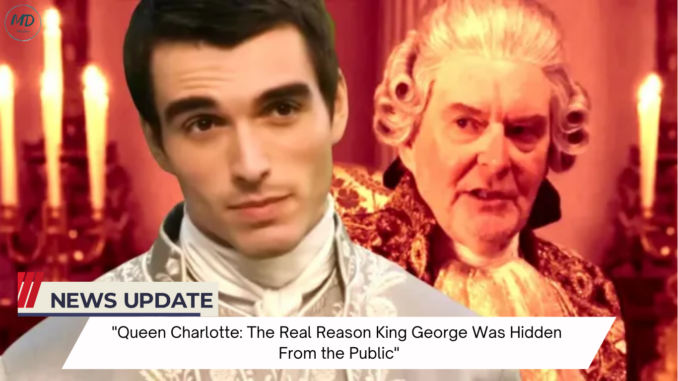
King George III’s appearance in Bridgerton is brief and he is rarely mentioned due to his poor health, not being considered a main character.
Queen Charlotte: A Bridgerton Story’s treatment of King George III, including extreme measures such as imprisonment and purges, reflects the historical reality of his medical treatment.
Queen Charlotte: A Bridgerton Story reflects modern theories that King George III may not have had porphyria.
King George’s appearance in Bridgerton in seasons 1 and 2 is brief and he is rarely mentioned – partly because he is not considered a main character and partly because he was too ill to appear in public at the time. Meanwhile, Queen Charlotte makes George a main character, of course. Played by James Fleet in Bridgerton, King George III is played by Corey Mylchreest, then in his 20s, in the spin-off. King George III’s three appearances in Bridgerton are initially only relevant because of what they reveal about Queen Charlotte.
The brief dinner scene with Queen Charlotte and King George III in Bridgerton Part 1 provides a fairly true-to-life explanation for Queen Charlotte’s interest in the fictional Lady Whistledown. Once we see how King George III is tortured and how much it bothers his wife, it becomes clear that Charlotte needs a distraction – and Lady Whistledown provides such a perfect and entertaining distraction that at times, Queen Charlotte seems to forget about her husband’s poor health. Queen Charlotte goes into more depth exploring their romance and their ongoing relationship, as well as his illness. Often referred to loosely as “King George’s Madness”, George III’s mental health has been a matter of fierce debate for many years. What is indisputable is the fact that George was unable to continue to rule as monarch once he reached middle age.
This prompted his son, George IV, Prince of Wales, to take over the king’s duties as Prince Regent. Sadly, George III’s incoherence and instability made him a poor face for the royal family, and he was kept out of the public eye to protect the image of the monarchy, much like what is seen with King George in Bridgerton.
In the last years of King George III’s life, he was kept in solitary confinement and out of sight. Unlike what is seen in Bridgerton, Queen Charlotte reportedly stopped eating with George. She slept in a separate bedroom from George and refused to be alone with him from 1804 onwards. By 1813, when Bridgerton took place, it is believed that Queen Charlotte had stopped seeing George altogether. He suffered several periods of extremely poor health, for a long time believed to be due to porphyria, and was confined to Kew for his own benefit. After a final relapse in 1810, the King never recovered and died in 1820. Although King George III is mentioned in Bridgerton, he plays a largely off-screen role, but his illness is largely based on historical accounts of the monarch. According to these accounts, King George III’s illness included convulsions, foaming at the mouth, incoherent speech, depression, and later, he lost his hearing, eyesight, memory, and ability to walk.
After the death of Princess Amelia, George sank into a deep depression and never recovered from the loss of his beloved daughter. In 1811, King George III enacted the Regency Act, making his son George IV regent and heir apparent. Queen Charlotte became George’s legal guardian, and the king’s mental and physical health continued to decline until his death in 1820. The exact cause of King George III’s “madness” is a matter of debate among historians and physicians. Until recently, the prevailing theory was that King George III suffered from porphyria (a rare liver disorder) and that his exposure to arsenic contributed to the worsening of his symptoms. Although the evidence that King George III suffered from porphyria is well documented and this theory remains widely accepted, conflicting theories have emerged in recent years.
